Perched in a towering 25-meter-high limestone cliff, the Bacho Kiro cave is a natural wonder in the picturesque canyon of the Dryanovska and Andaka rivers. As the first landscaped cave in Bulgaria open for visitors, it offers an enthralling experience for tourists. But what sets it apart from other caves, is the discovery of some of the earliest traces of Homo sapiens ever found in Europe.
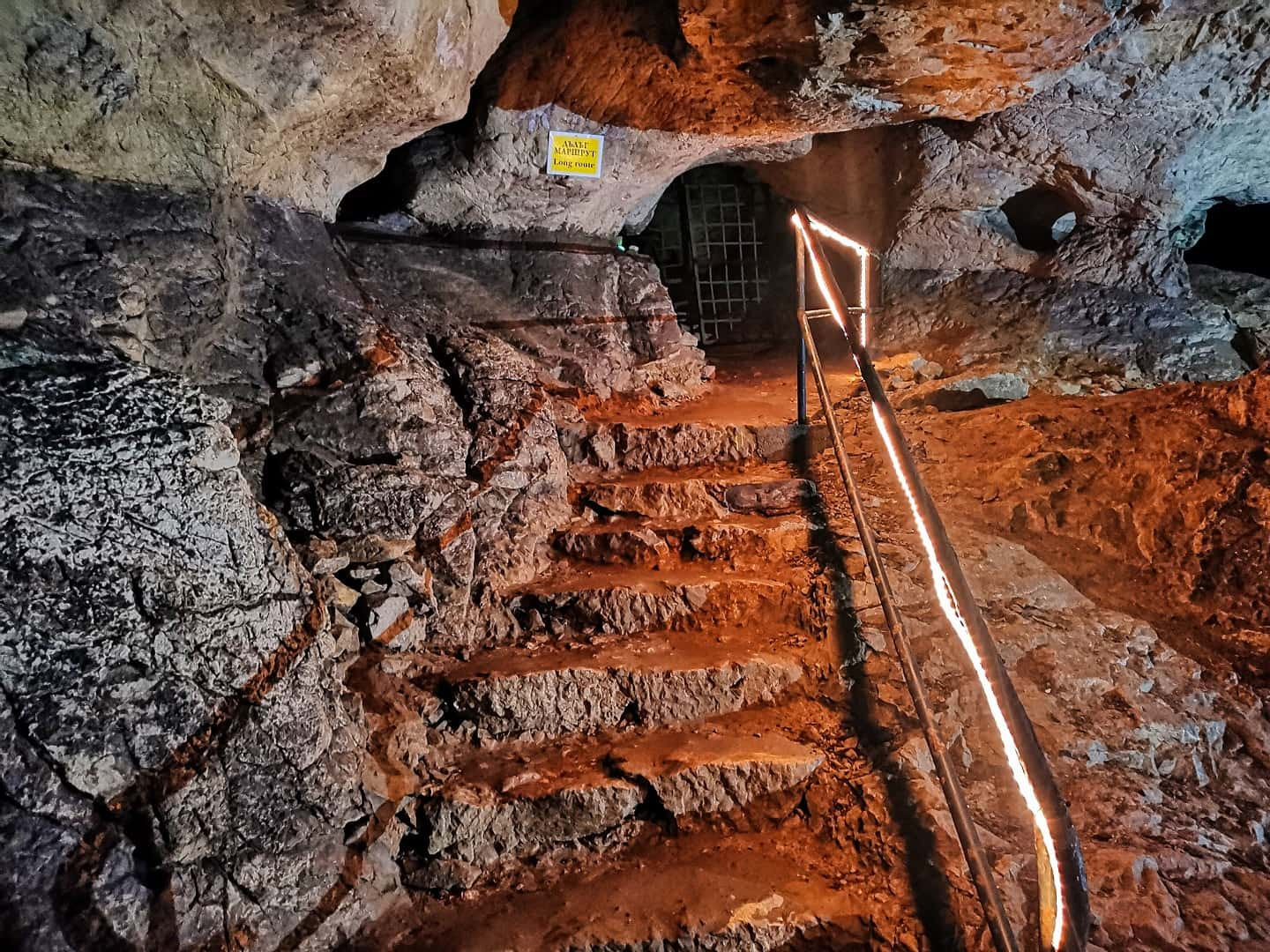
Cave history and structure
The Bacho Kiro cave opened for visitors in 1937 and got its name in 1940 in honor of the hero of the April Uprising, Bacho Kiro, who sought refuge in its secret labyrinths. The cave is a complex network of passageways and galleries spanning four levels and measuring a total length of 3,600 meters. As a result, it is the 13th longest cave in Bulgaria. In 1962, it was declared a natural landmark.
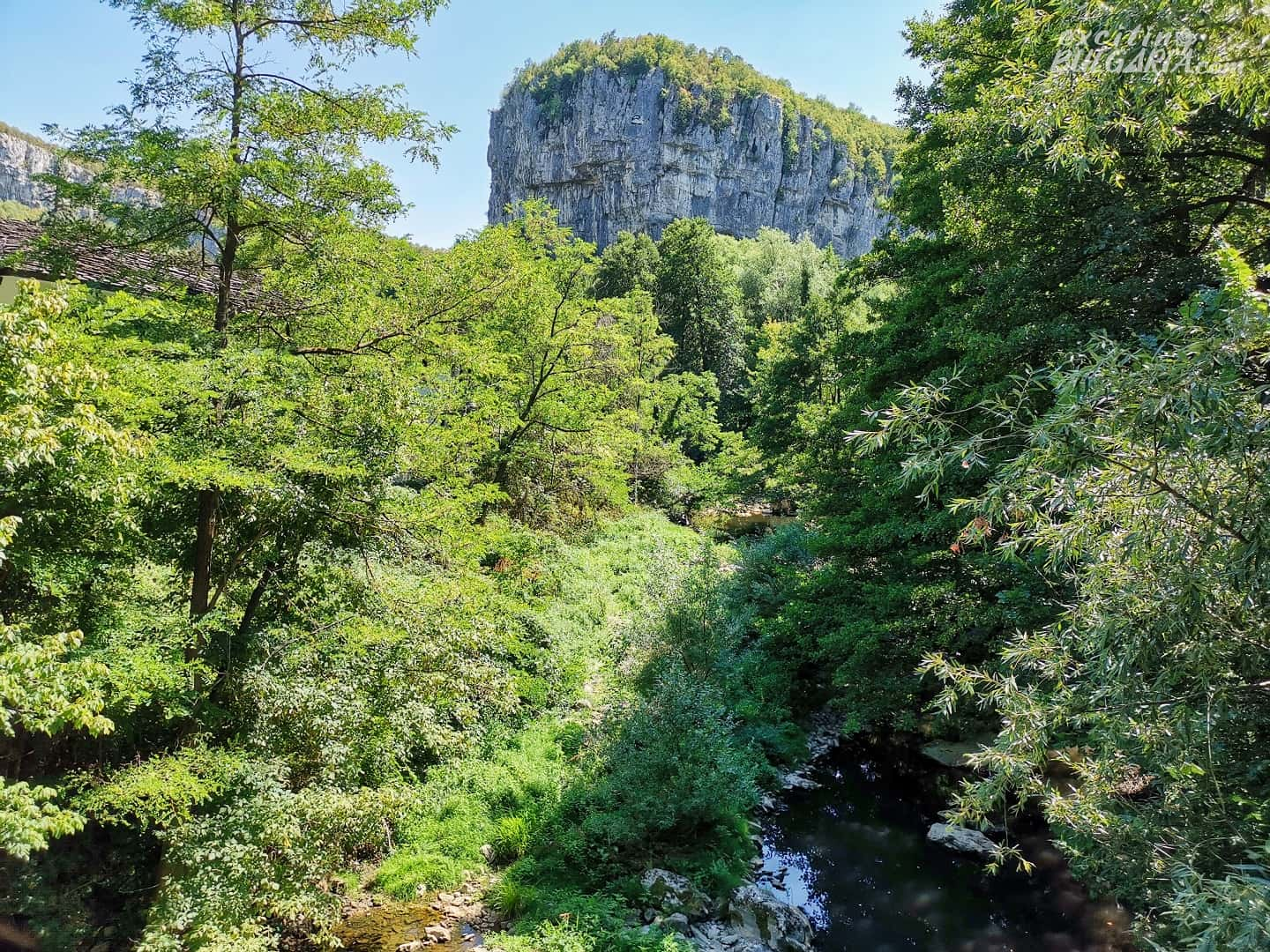
Visitors can now explore 700 meters of the cave, fitted with electrical lights since 1964. The cave has a constant temperature of 13 degrees and 95% humidity, so be sure to bring some warm clothing as you delve into the wonder of the underground world.
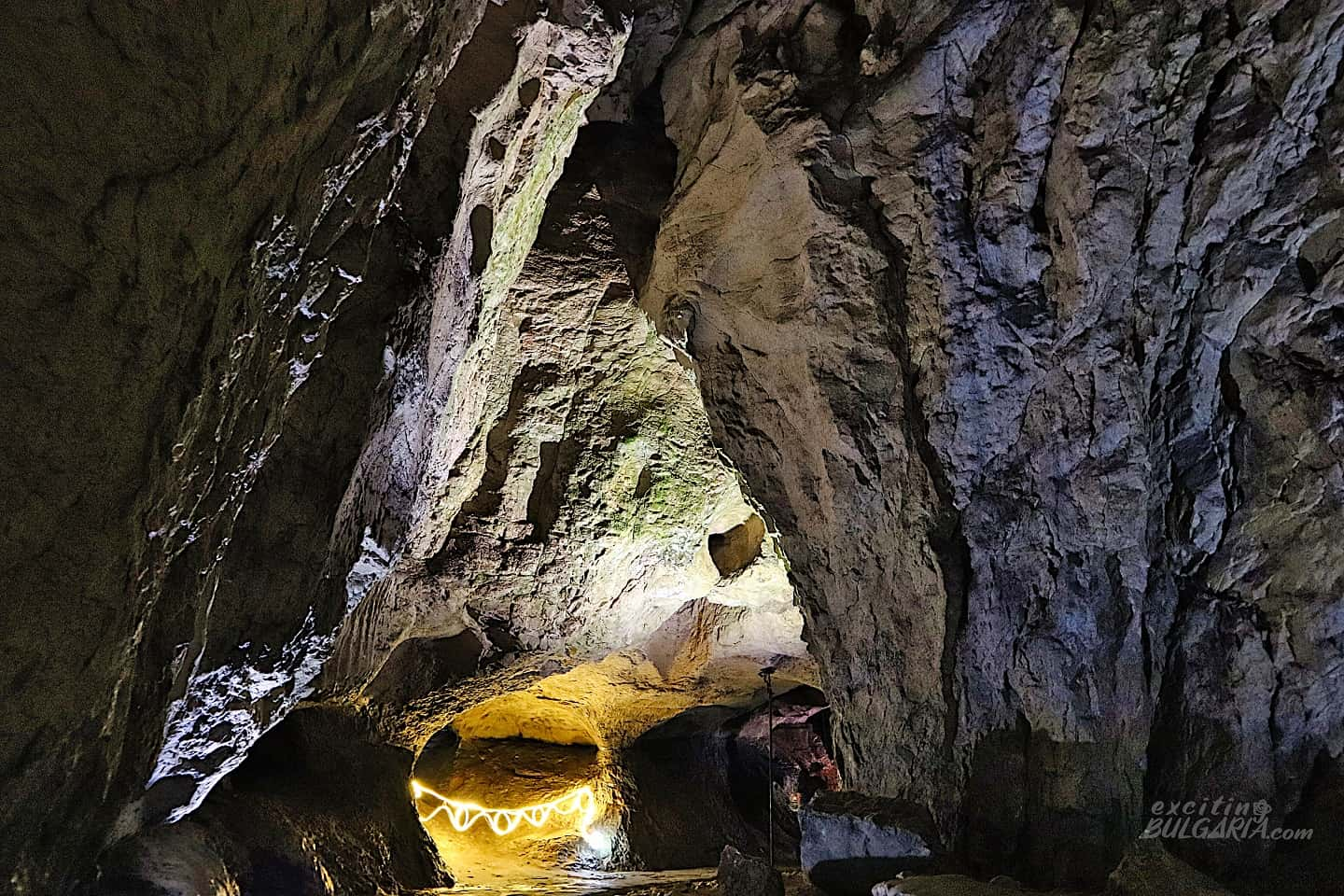
The Bacho Kiro cave formed in a limestone cliff between the canyons of the Dryanovska river and its tributary, the Andaka river. The area was once a seafloor, and today visitors can see fossils of various marine life in the cave. The cave’s formation is closely tied to the water of the Andaka river. Approximately 1.8 million years ago, during the Quaternary period, the river began to seep into the rock’s crevices and gradually formed the cave.
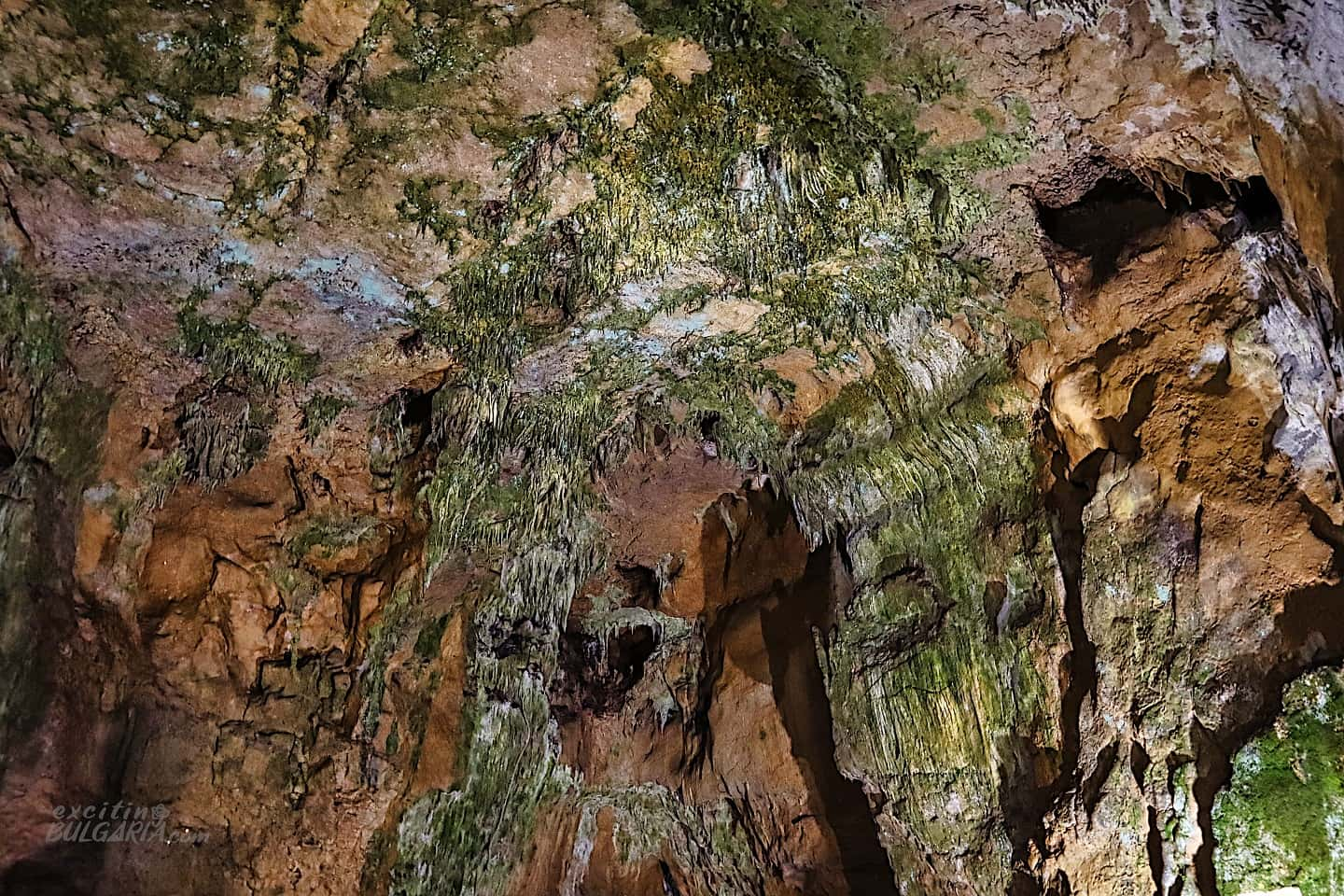
The intricate cave structure was further shaped by the karst water that seeped into the limestone above the galleries and halls. Over time, an underground river sculpted the many galleries that house an abundance of stunning stalactone, stalactite, and stalagmite speleothem formations. The constant dripping of karst water, rich in calcium, over hundreds of thousands of years has resulted in the cave’s beautiful shapes and forms.
Routes
Currently, there are two options for visitors to take when exploring the cave, a short and a long route. Both routes start at the same place. After the low entrance, visitors arrive in a large hall, the 20 m high Vestibule.

The short route is a 350-meter trek that takes approximately 20 minutes to complete. It features the Purgatory, the Rain Hall and the Concert Hall – which boasts excellent acoustics and occasionally hosts concerts. The Purgatory, one of the main attractions, is a low and narrow passage that one must pass through while lying down. According to the belief, the easier it is to pass through it, the fewer sins a person has. Visitors will encounter many coins on the walls and floor in the last two sections. The legend says that one must pass through the Purgatory and attempt to stick a coin after. If the coin sticks, one’s sins have been absolved. If it falls, one must repeat the process.
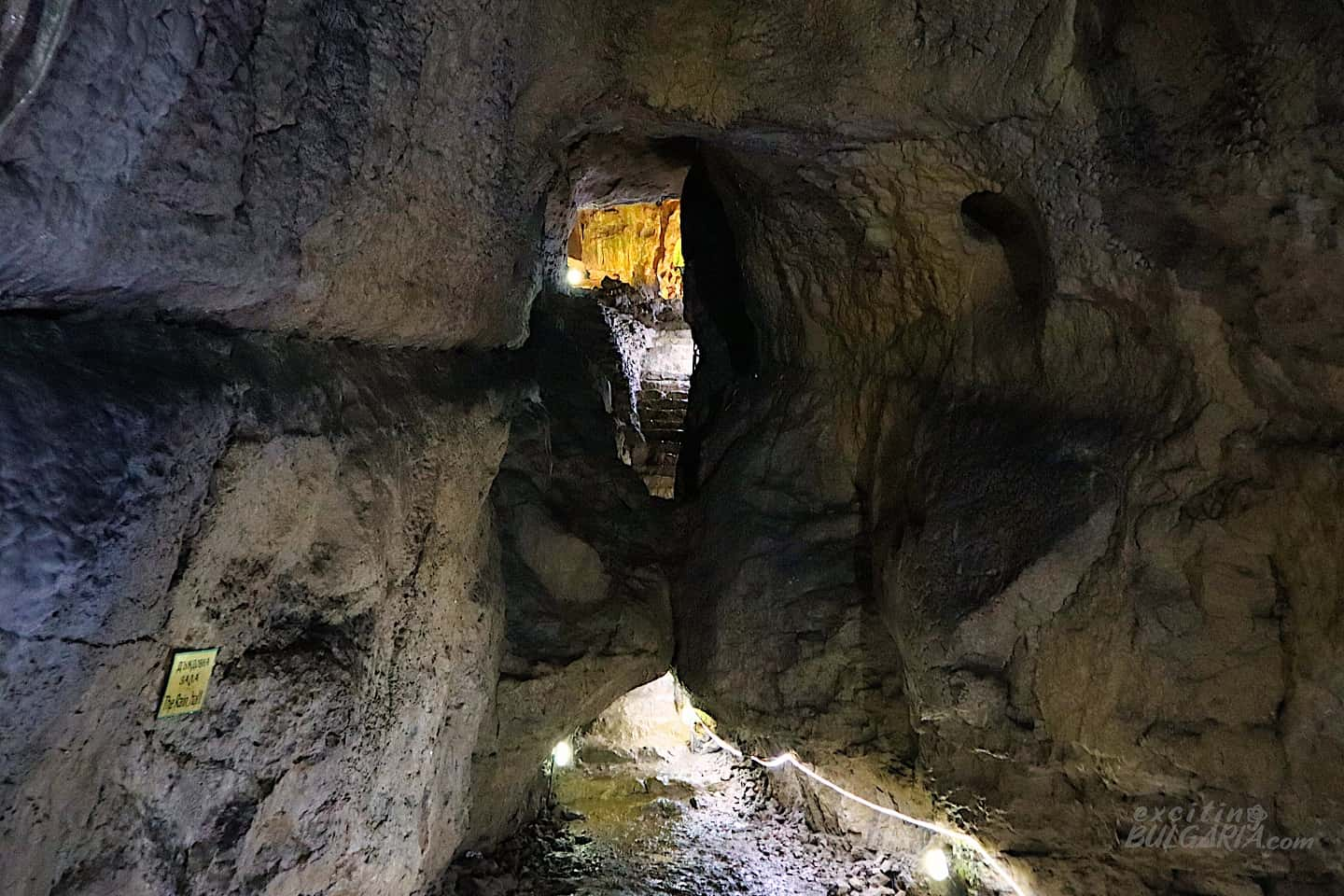
The long route, a 900-meter trail that takes about 60 minutes, must be taken with a tour guide. It begins just before the Purgatory and can be accessed through an otherwise locked door. Along the way, visitors will see impressive formations that have formed over hundreds of thousands of years, resembling fish, snakes, people, the Virgin and Child, a bear and others. The tour culminates in the farthest hall, the Reception, where a majestic stalacton can be seen, measuring about 8 meters in height and 1.5 meters in circumference.
Prehistoric remains
Work tools and traces of intensive human habitation have been found in the first hall of the cave by archaeologists, dating as early as 70,000 BC. However, the most interesting finds are not the oldest ones.
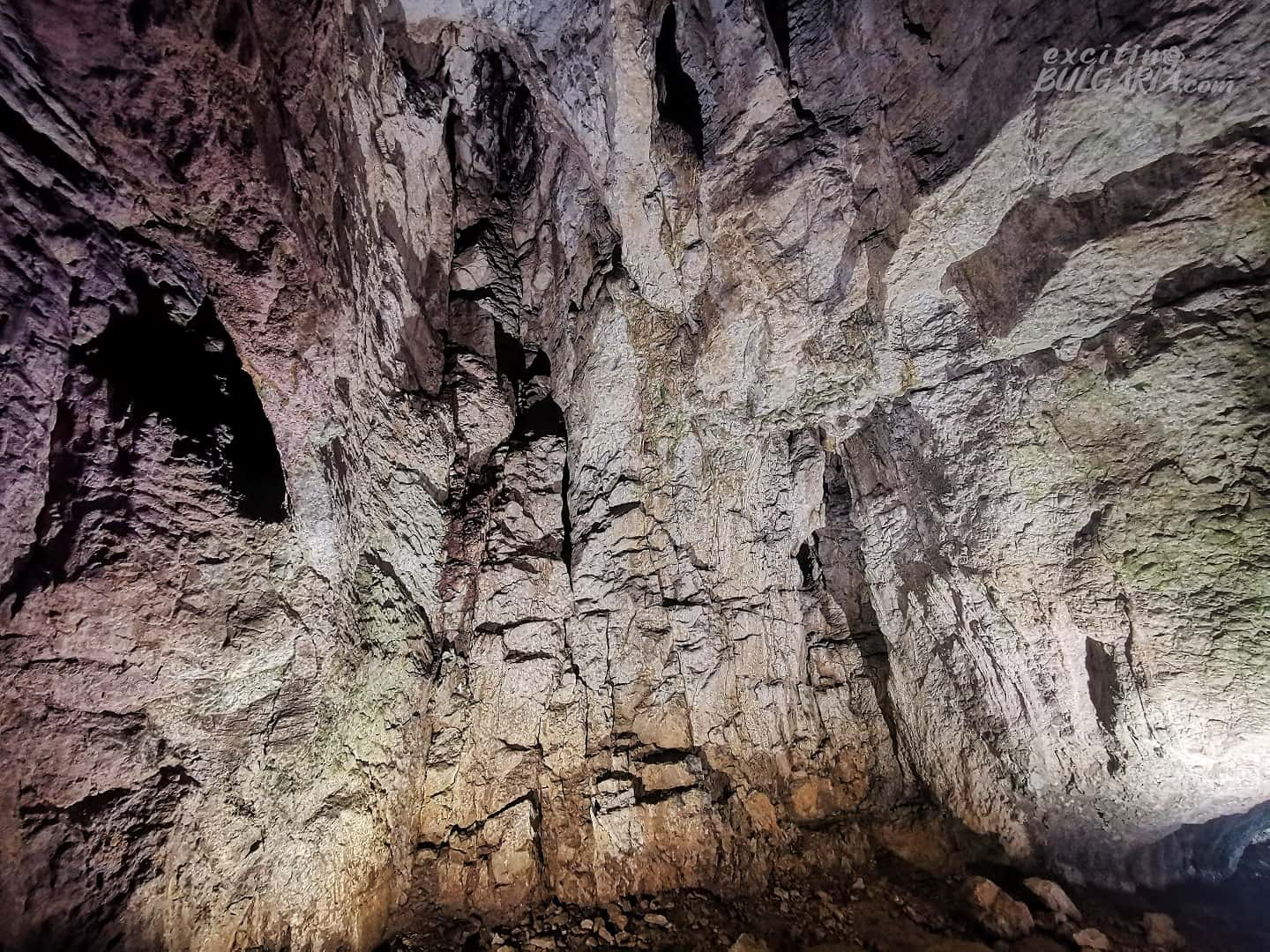
According to the most recent studies, some of the remains discovered in the Bacho Kiro cave are the earliest evidence of Homo sapiens in Europe, marking the transition to a new stage in prehistory – the Upper Paleolithic period. Radiocarbon dating of the remains in the cave estimates them to be between 43,000 and 46,000 years old. These findings document the earliest known late Paleolithic Homo sapiens in Europe and push back the date for the beginning of this cultural transition. This is also the earliest known occurrence of modern Homo sapiens in the middle latitudes of Eurasia.

By comparing the genomes of the individuals found in Bacho Kiro cave with those of people who lived later in Europe and Asia, researchers from the Max Planck Institute discovered that this early human group had a genetic impact on the development of later human populations. Interestingly, this genetic contribution nowadays is primarily found in East Asia and even in the Americas rather than in Europe, where the Bacho Kiro Cave people lived. Until recently, it was assumed that the ancient Homo sapiens of the early Late Paleolithic period disappeared without leaving any genetic impact on modern humans who arrived later.
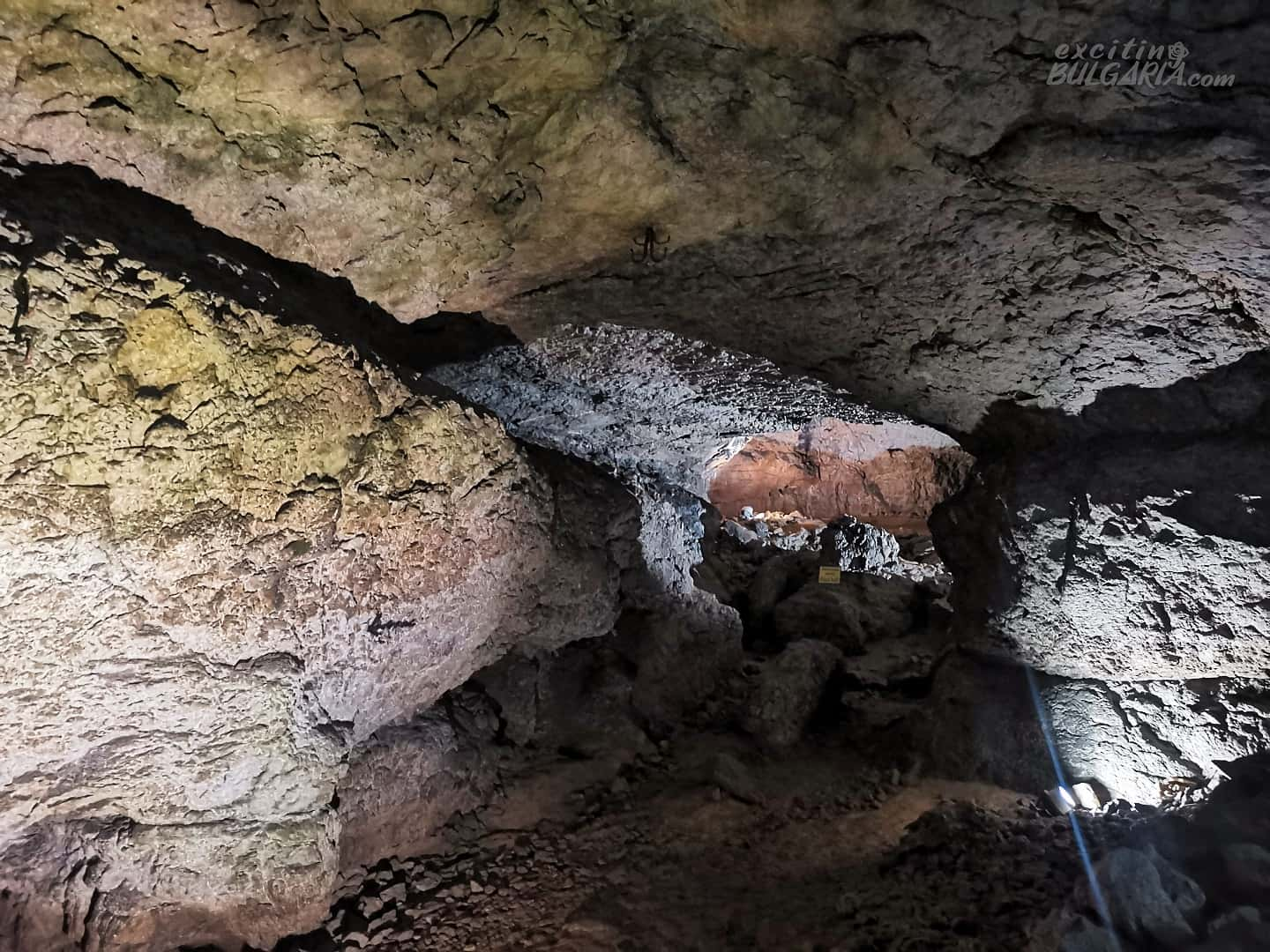
Scientists have also identified Neanderthal DNA in the genomes of the oldest modern human population from Bacho Kiro Cave. This Neanderthal DNA was found in extensive segments, indicating that these modern Homo sapiens had Neanderthal ancestors from about 5 to 7 generations back in their lineage.
The bone and clay amulets found here provide evidence of prehistoric art and the emergence of religious beliefs among early humans.
Cave bear bones
An intriguing discovery made by the researchers is a massive cave bear skeleton, measuring 3 meters in height, which is now on display at the British Museum in London. The location where the skeleton was found, now known as the Bear Meadow, is 300 meters inland from the cave entrance and can be accessed on the long route.
Fauna
Bacho Kiro cave is a winter bat sanctuary, with hundreds of bats residing here from December to the end of March. There are four species inhabiting the cave:
● the greater horseshoe bat (Rhinolophus ferrumequinum)
● the lesser horseshoe bat (Rhinolophus hipposideros)
● the Mediterranean horseshoe bat (Rhinolophus euryale)
● the Natterer’s bat (Myotis nattereri)
Visiting Bacho Kiro cave
Location
The Bacho Kiro cave (BG: пещера Бачо Киро) is located only 300 m south of the Dryanovo Monastery on the northern slopes of the Balkan Mountains around 200 km east of the capital Sofia, 30 km southwest of the historic town of Veliko Tarnovo and 6 km southwest of Dryanovo.
How to get there
International road E85 between Veliko Tarnovo and Gabrovo passes nearby. The turnoff to both the Bacho Kiro cave and the monastery is next to a tall, stone monument where you can see a ’Dr. monastery 1 km’ sign too.

You can leave your car at the paid parking of the monastery and take a scenic stroll along the river to reach the cave, walking past the small Dryanovo waterfall as well. It is not possible to drive closer to the cave.
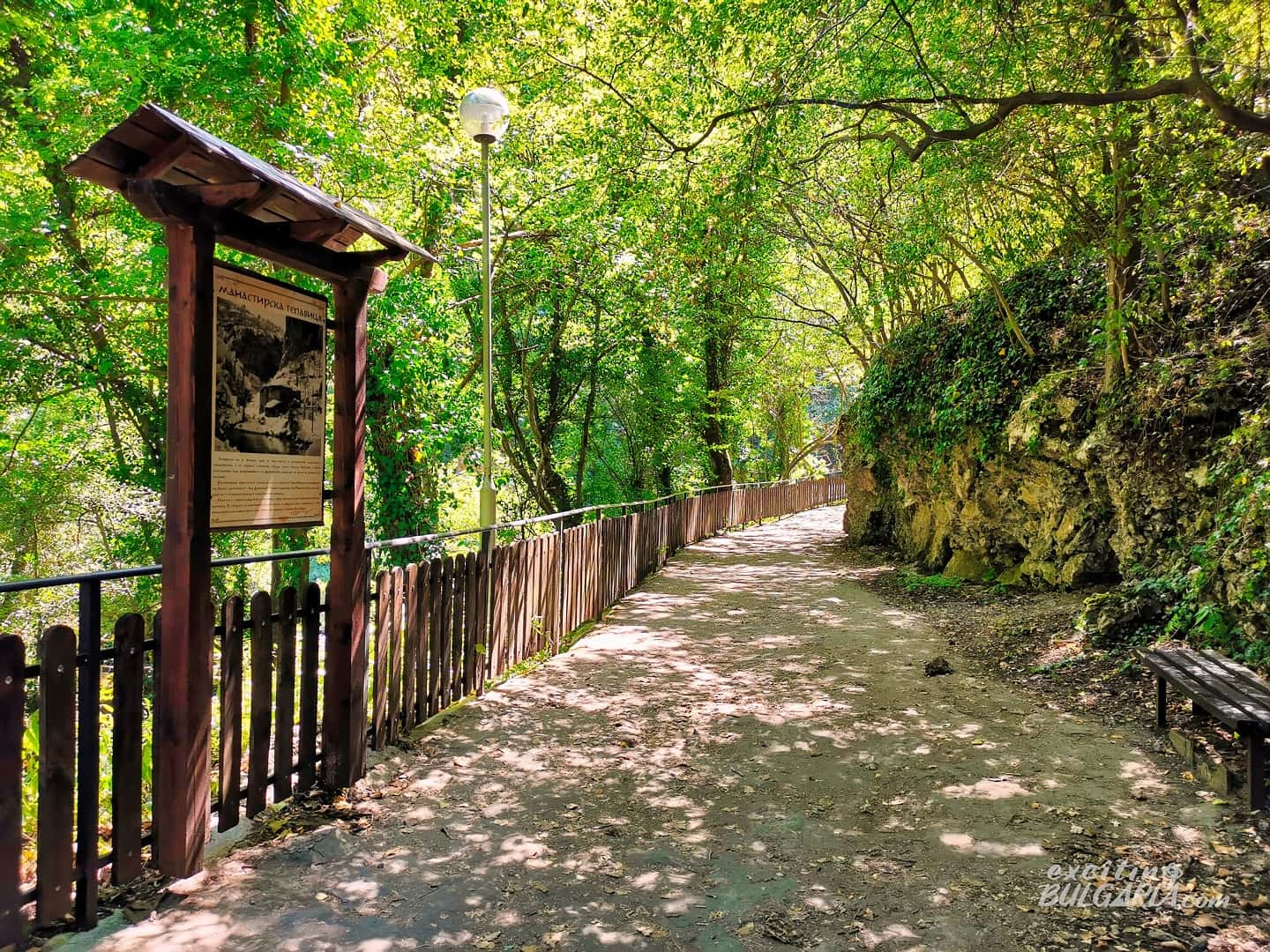
Buses operating between Veliko Tarnovo and Gabrovo also stop at the turnoff. Trains on the Ruse-Gabrovo and Stara Zagora-Gorna Oryahovitsa lines stop at Bacho Kiro railway station, which is only around 800 meters from the cave.

Opening hours
● November – March: 10:00 – 16:00 every day
● April – October: 09:00 – 18:00 every day
The last visitors can enter one hour before the end of the working hours.
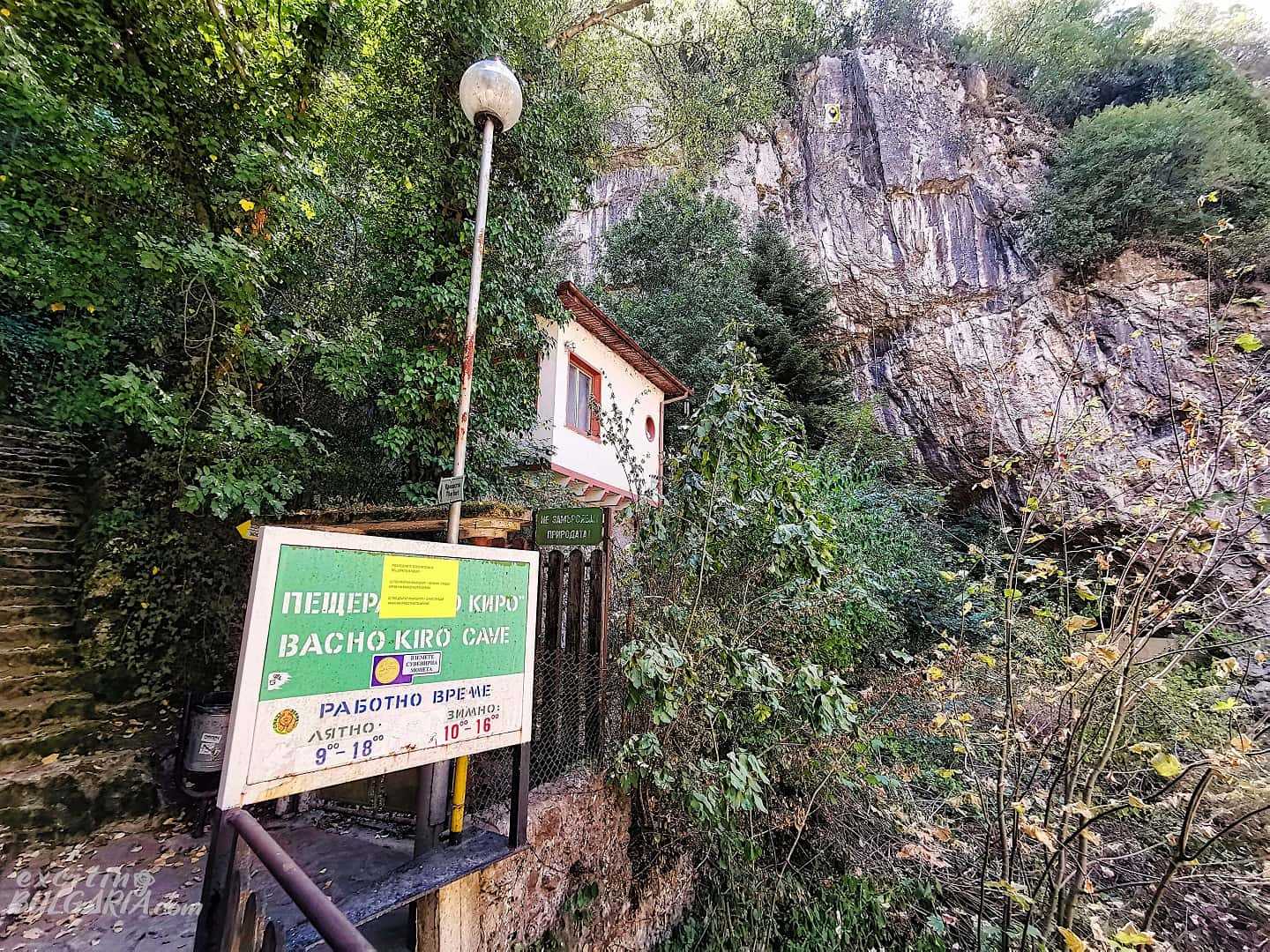
Tickets
Short route (20 min.)
● adults: 5 BGN
● children, students and pensioners: 3 BGN
● family ticket (two adults with up to 3 children under 18): 10.00 BGN
● children up to 7 years: Free
Long route (60 min.)
● adults: 8 BGN
● children, students and pensioners: 5 BGN
● family ticket (two adults with up to 3 children under 18): 16.00 BGN
● children up to 7 years: Free
The short route departs individually, at any time, or in groups every 30 minutes. The long route can only be taken with a guide (included in the price) and only by groups of more than 15 people. However, from April 1 to October 31 every day at 14:00, there is a long tour held for anyone interested.
Entering the cave
It should be noted that the cave floor might be extremely slippery; use caution. Also, as mentioned before, it is advised to bring some warm clothing for the visit.
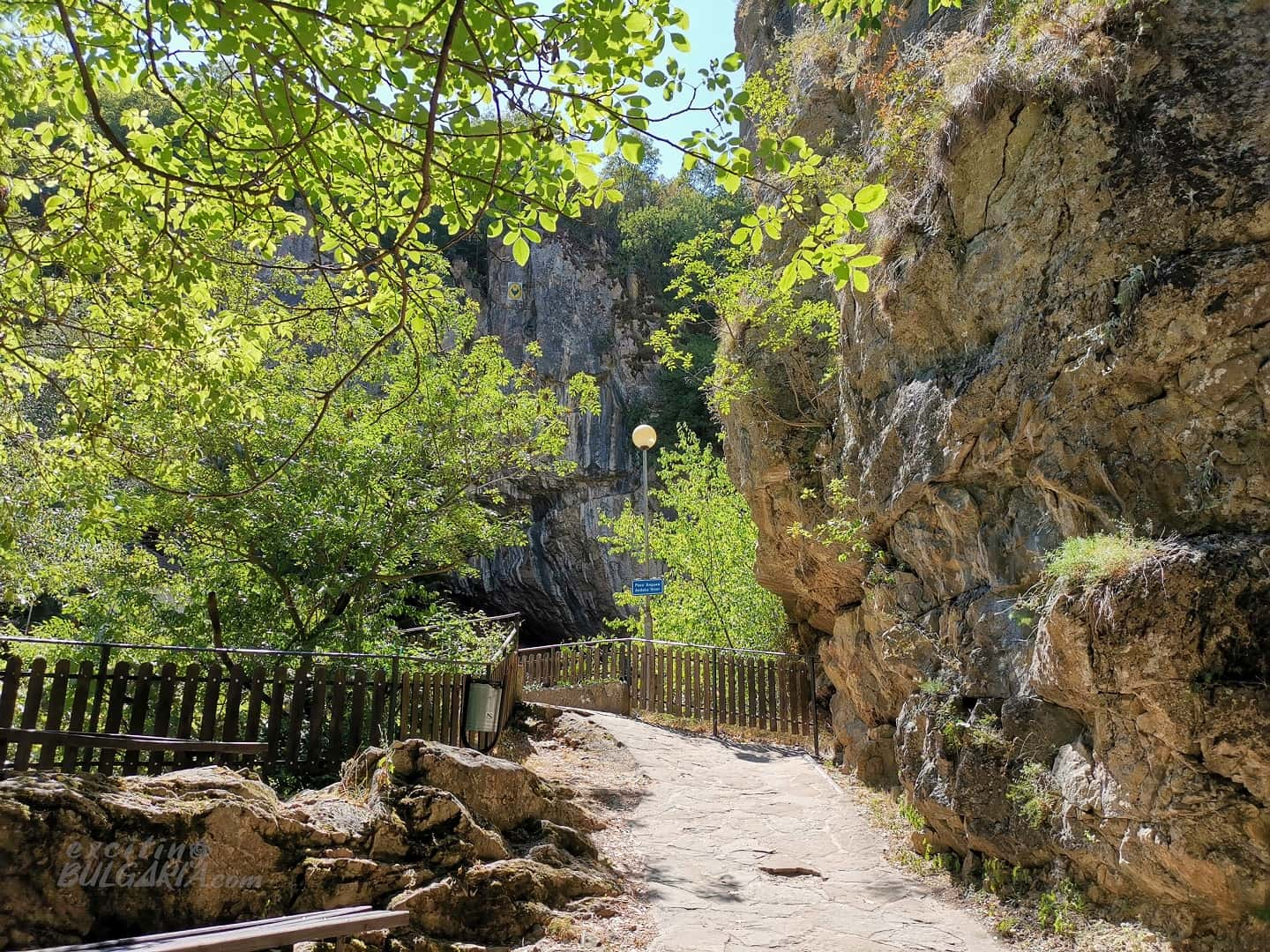
What to see nearby
The Dryanovo Monastery, one of Bulgaria’s most prominent monasteries, is located only 300 meters down the river and is well worth a visit.
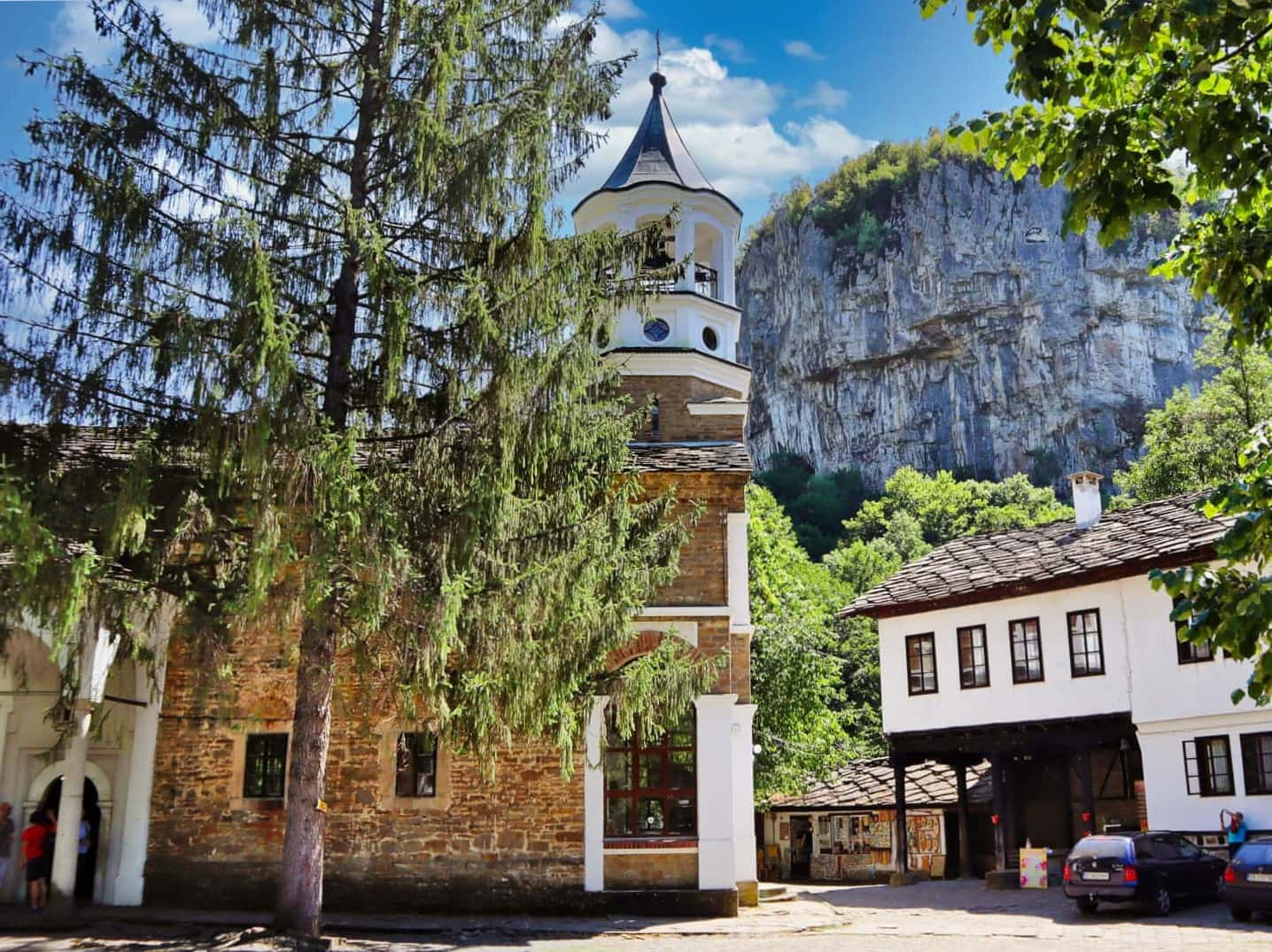
There is another cave located very close to Bacho Kiro, called Andaka, the same as the river. A unique feature of this 5000 m long cave is that a water treatment plant was constructed in its entrance hall, which supplied the town of Dryanovo with drinking water until 1979. Please note that this cave is not landscaped, and it doesn’t have any particularly interesting formations. However, it is quite popular among cavers who have the necessary equipment and experience.
